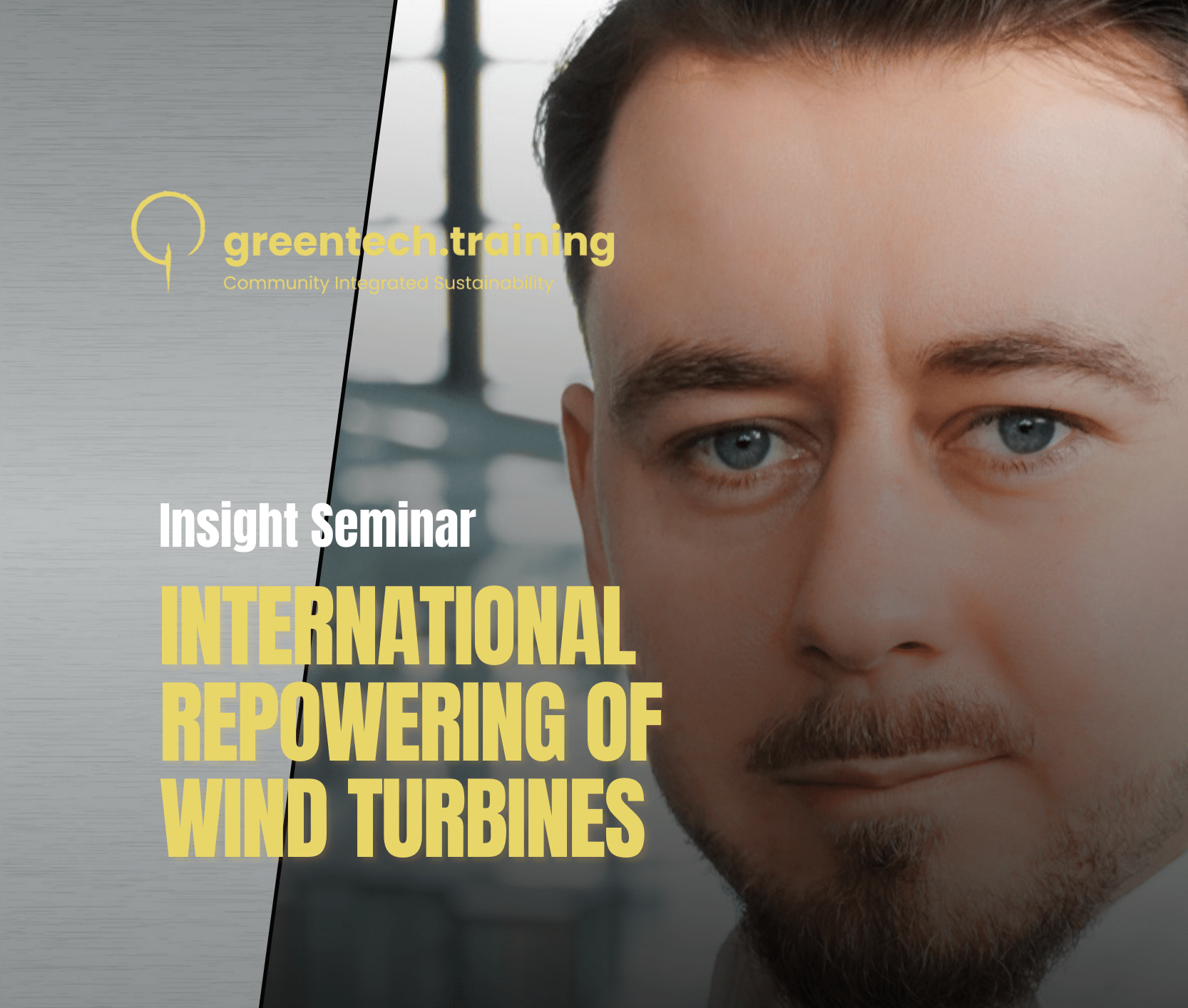Refurbishing and Repowering Wind Turbines
An overview of the key differences in an international context

Today’s blog is provided by the highly experienced energy consultant Roman Boos who introduces the new International Repowering of Wind Turbines Insight Seminar by going over the key differences between refurbishing and repowering. Insight Seminars are designed to provide international green technicians with otherwise hard-to-obtain knowledge and hard-won experience from vetted experts. You can register here.
Wind turbines play a crucial role in driving the clean energy transition. As these turbines age, there comes a point where decisions must be made regarding their future. Two common approaches are repowering and refurbishing. While both options aim to improve turbine performance and extend their lifespan, there are key distinctions between the two. In this blog post, I will outline the differences between repowering and refurbishing to provide a clear understanding of these processes in an international context.
Repowering Wind Turbines: Repowering involves the complete replacement of older turbines with newer and more advanced models. Here are some key aspects to consider:
- Upgrading Turbine Technology: Repowering focuses on installing new wind turbines that feature the latest technological advancements. This includes improvements in rotor diameter, hub height, generator capacity, and control systems.
- Increased Energy Production: The primary objective of repowering is to enhance energy production. Newer turbines are designed to capture more wind energy and operate more efficiently, resulting in increased power generation and improved performance.
- Site Evaluation and Infrastructure: Before repowering, engineers assess the site’s wind resource potential, environmental impact, and grid connection capacity. They consider factors such as wind speed, direction, and topography to optimise turbine placement.
- Regulatory Considerations: Repowering projects must adhere to regulatory standards and environmental requirements specific to the location. Compliance with local and international regulations ensures the safe and sustainable operation of wind farms.
- International Influences: Repowering initiatives can be influenced by international collaboration and knowledge sharing among industry stakeholders. This includes sharing best practices, technological advancements and regulatory frameworks to promote successful repowering projects across borders. Additionally, the sale and reconstruction of dismantled turbines to other countries with nascent renewable energy structures plays a significant role in supporting sustainable development on a global scale.
Refurbishing Wind Turbines: Refurbishing focuses on restoring and revitalising existing wind turbines to extend their operational life. Here are some key aspects to consider:
- Component Replacement and Maintenance: Refurbishing involves the replacement or repair of specific turbine components such as blades, gearbox, generator, and control systems. Regular maintenance and inspection help identify and address issues to ensure optimal performance.
- Performance Optimization: The goal of refurbishing is to optimise the existing turbine’s performance through repairs, upgrades, and adjustments. This may involve retrofitting the turbine with more efficient components or implementing new monitoring and control systems.
- Cost-Effectiveness: Compared to repowering, refurbishing generally involves lower upfront costs. It allows for the continued use of existing infrastructure and components while still improving turbine performance and reliability.
- Operational Considerations: Refurbishing projects require careful planning to minimise downtime and ensure a smooth transition. Engineers assess the turbine’s condition, identify potential risks, and develop strategies to mitigate operational disruptions during the refurbishment process.
- International Influences: Refurbishing projects can benefit from international collaborations in terms of knowledge sharing, technology transfer, and standardised refurbishing practices. Cross-border cooperation allows for the exchange of expertise to enhance the effectiveness of refurbishment projects globally. The refurbishment process often involves the overhauling and repair of turbine components, including blades, gearboxes, generators, and control systems. As part of this process, there is a growing trend of refurbishing and repurposing used components for sale to other countries.
Ultimately, the choice between repowering and refurbishing depends on various factors such as project objectives, budget, new site conditions, and regulatory requirements. It is essential for stakeholders and engineers to carefully evaluate these factors to make informed decisions that maximise energy production, ensure long-term reliability. My seminar will reveal what to consider when making this decision, as well as other critical aspects related to cross-border repowering, stakeholder- and inventory management and reassembly.
